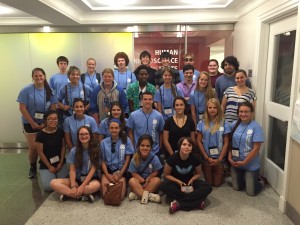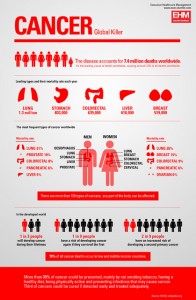
Valerie Reyna
Valerie Reyna, professor of human development, studies the neuroscience of risky decision making and its implications for health and well-being. She says changing advice contributes to the perception that experts might not know what they are doing, which is false. Emotions and actions in reaction to a risk depend crucially on how people understand the gist of the risk. Providing the facts is important, but it is how people interpret those facts that determine behavior. Dr. Reyna participated in a Newswire roundtable of experts (click here for the link to the video) and discussed how her research can help the public better understand the risks of COVID-19 and improve their decisions about how to respond to it. She also participated in a roundtable discussion organized by the Association for Psychological Science (click here for the link to the transcript).
During the COVID-19 crisis, the public’s need for accurate scientific information is a matter of life and death. Nevertheless, misinformation is plentiful and it competes with scientific information in what Reyna calls “a battle for the gist” in a new PNAS publication.
In an age of evidence-based science communications for the public good, researchers face a persistent paradox. Despite their efforts to report research findings to the public, misinformation propagates across the Web and around the world. Outreach campaigns using traditional fact-based communications are not necessarily effective in correcting misconceptions. What can be done to more effectively communicate science in a way that helps the public resist misinformation?
Valerie Reyna, Lois and Melvin Tukman Professor of Human Development at Cornell University, has applied her information-processing model, Fuzzy Trace Theory (FTT) to the puzzle of why people accept alternative explanations, narratives, interpretations, or conspiracy theories, and discount or distort facts. All human beings tend to distort facts. However, it is possible to help people make decisions that draw on scientific facts and that reflect personal values. The FTT approach offers a framework to understand and to reduce obstacles to public understanding of scientific research. Reyna has identified several key components necessary for constructing an accurate representation of the meaning of science communications.
According to the FTT model, as we process information, it is encoded simultaneously in two formats – “gist” and “verbatim.” Verbatim information includes specific facts, details, numbers, and exact quantities. The precise details, percentages, proportions, or ratios can represent facts, but typical scientific communications do not necessarily convey the relevance or substance of facts: its bottom-line meaning. Rote memory for detailed information often fades from memory, whereas memory for gist—or substance--endures.
Gist representations of information in the mind elicit emotions and social values, and are shaped by knowledge and experience. Research has shown that long after verbatim content, (e.g., specific words, numbers, or syntax), has faded from memory, gist memory remains preserved.
The discrepancy between the recall of gist information and the recall of verbatim information offers an inroad to spread misinformation and conspiracy theories. The effort to provide objective unbiased facts often leads researchers to present data largely in a verbatim format, allowing recipients to judge for themselves the truth-value and justification of the data. This verbatim approach opens the door to others to offer interpretations and explanations, even when the science is uncertain. Hence, meaningful, emotional, and values-evoking alternative gist interpretations or narratives can gain traction and spread across the internet or similar media. Individuals can unintentionally misconstrue the verbatim details of the data and share it with others.
The repetition of these messages within a community of sharers and recipients adds credibility to interpretations as the precise verbatim details are increasingly forgotten in favor of the gist content of the misinformation. Thus, Reyna explains that rather than removing all interpretation, emotion, and values, that scientists can communicate in a way that is neither meaningless facts nor persuasion. The meaning behind the gist—the why—should be made as transparent as possible so that individuals can make their own decisions. The gist-based approach to science communications builds on a foundation of science literacy and the value of scientific research for the public, as well as reduces the acceptance and spread of misinformation.
Journal reference for this story:
Reyna, V.R. (2020). A scientific theory of gist communication and misinformation resistance, with implications for health, education, and policy, PNAS (Proceedings of the National Academy of Sciences). www.pnas.org/cgi/doi/10.1073/pnas.1912441117




 Lin Bian
Lin Bian One of the central goals in the establishment of the
One of the central goals in the establishment of the 
 APS President Suparna Rajaram invited four distinguished psychological scientists to speak about memory from cognitive, neuroscientific, cultural, and developmental approaches as part of the Presidential Symposium at the 30th Annual APS Convention in San Francisco. Watch Qi Wang's presentation, "Studying Memory Development in Cultural Context: A Multi-Level Analysis Approach".
APS President Suparna Rajaram invited four distinguished psychological scientists to speak about memory from cognitive, neuroscientific, cultural, and developmental approaches as part of the Presidential Symposium at the 30th Annual APS Convention in San Francisco. Watch Qi Wang's presentation, "Studying Memory Development in Cultural Context: A Multi-Level Analysis Approach".






